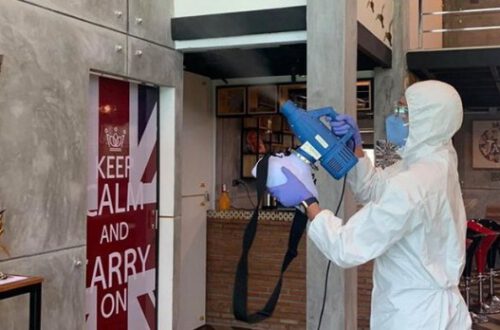
Coronavirus and Cleaning
What is Coronavirus
According to the U.S. Centers for Disease Control & Prevention (CDC), coronaviruses are a large family of viruses, some of which already circulate among humans and cause mild illness, like the common cold. The virus causing coronavirus disease 2019 (COVID-19) is a new strain first identified in China. Health experts continue to learn more about this new strain.
The virus has symptoms associated with respiratory illnesses, including fever, cough and shortness of breath. It seems to spread like other respiratory illnesses as well, primarily through person-to-person contact. Preventing Coronavirus
At this time, the differing parts of the U.S. are experiencing different levels of novel coronavirus activity and everyone needs to be prepared. Targeted hygiene practices can go a long way to help keeping families safe. Following product use and safety information is critical in this regard. It is especially important now to make sure cleaning and hygiene precautions are not just being done, but being done correctly, to ensure effectiveness. Cleaning for Coronavirus
Handwashing: Proper handwashing is particularly important because it is such a critical step in preventing the spread of germs, yet a study found that 95 percent of people are doing it incorrectly.
Wet hands with clean, running water before applying soap.
Lather both hands, including the backs of your hands, between your fingers and under your nails.
Scrub hands for at least 20 seconds before rinsing and drying.Hand Sanitizer: The CDC notes that this can be a useful alternative if soap and water are not readily available, as long as it contains at least 60 percent alcohol.
Use one or two squirts or pumps of the product.
Rub hands together briskly, including the front and back, between fingers, around and under nails until hands are dry.Disinfecting: There are a number of disinfectant and cleaning products that can be effective against the novel coronavirus on hard, nonporous surfaces, in accordance with the EPA Viral Emerging Pathogen Policy.
EPA-registered disinfectant products to use against Novel Coronavirus (COVID-19) There is also an app for finding this information.
Cleaning and disinfecting tips to remember:
Pre-clean any surfaces prior to disinfecting to remove any excess dirt or grime.
After disinfecting, let the surface air dry as recommended on the product label.
If disinfecting food contact surfaces or toys, rinse with water after they air dry.
Pay particular attention to disinfecting things that come into frequent contact with your hands, like your phone.
If using a disinfectant wipe, throw out after using. Do not flush any non-flushable products.Disinfectants are meant to kill germs or viruses on hard surfaces. Under no circumstances should they ever be used on one’s skin, ingested or injected internally.
Always store products used for cleaning and disinfecting up and out of reach of children.
If you still have questions about a product’s specific effectiveness, check out the product or company website, which can provide additional information. Key Times to Clean
At Home: Wash your hands before and after food prep, before eating, after using the bathroom, after touching garbage or diapers and after handling pet food. Clean and disinfect frequently touched objects, like door handles and light switches. If someone in your home is sick, follow these CDC guidelines for additional cleaning and disinfecting actions.
At Work: Always wash hands before eating and after using the bathroom. If you're not near a sink, use hand sanitizer containing at least 60% alcohol. Try not to share food and routinely clean and disinfect frequently touched surfaces. Stay home if sick and encourage colleagues to do the same.
When You Have to Go Out: Avoid touching your face after contact with frequently-touched surfaces. Consider using an antibacterial wipe on the grocery cart handle, especially if a child will be riding in the cart. If using reusable bags, be sure to wash them when you get home.
During Essential Travel: Stay at least 6 feet away from anyone who is sneezing, coughing or blowing their nose. At the airport, wash your hands after going through security and after getting off the plane.






